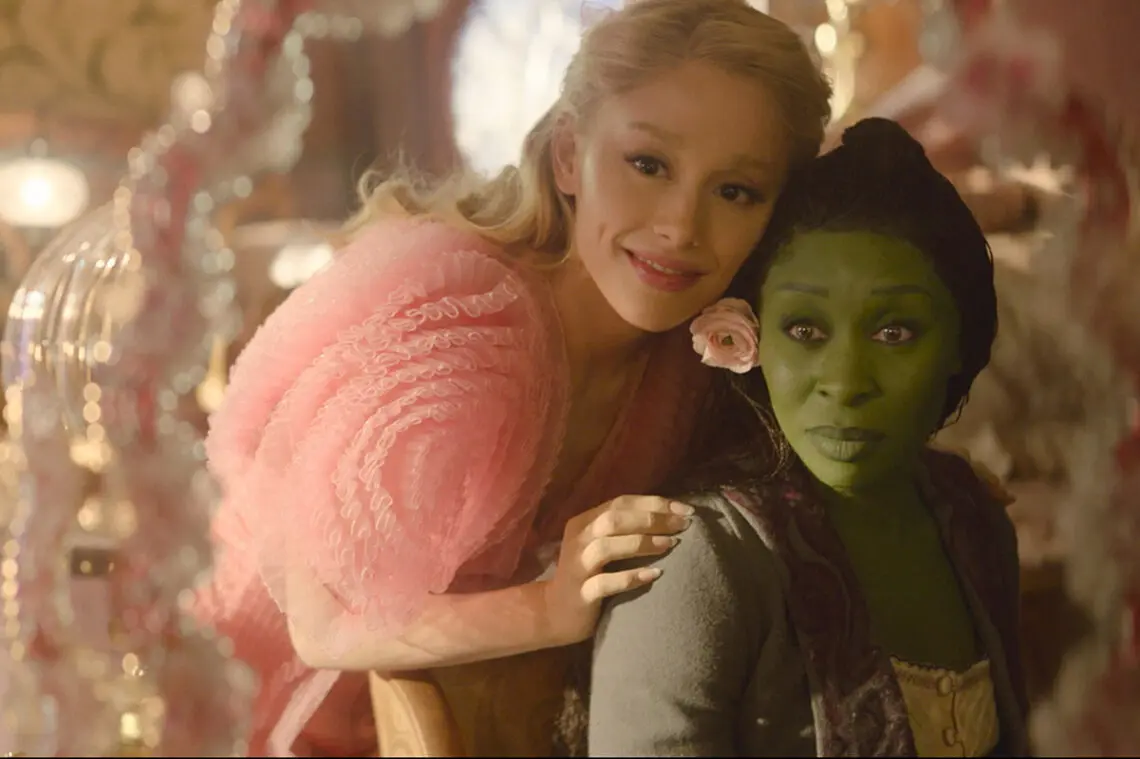Inside the magic: Wicked filmmakers shed light on the making of the anticipated movie
A palpable excitement at the festival
The anticipation was undeniable. One day before the much-awaited panel “Wicked: A First Look” at the SCAD Savannah Film Festival, whispers circulated about fans lining up at least an hour early. When the panel commenced, cinematographer Alice Brooks, editor Myron Kerstein, and costume designer Paul Tazewell were greeted like celebrities, resonating the auditorium with fervent screams. The electrifying atmosphere set the stage for a deeper dive into the heart and soul of the upcoming movie adaptation of Wicked.
The audience’s heartbeat: Team Glinda vs. Team Elphaba
Kerstein ignited the crowd’s enthusiasm by investigating the rivalries between fans of Glinda and Elphaba. While applause alone couldn’t differentiate the camps, a show of hands pointed to a slight leaning towards Glinda. The artisans refrained from taking sides, cherishing both characters equally. This balance of friction-turned-friendship greatly influenced the filmmakers’ creative process.
Envisioning the love story
Brooks reminisced about her initial discussions with director Jon M. Chu. Fresh off their collaboration on In the Heights, Chu approached Brooks with the vision for Wicked. Their conversations revolved around making the film a stunning portrayal of the bond between two best friends, Glinda and Elphaba.
Set prior to The Wizard of Oz, Wicked serves as a backstory for beloved characters like the Scarecrow, the Tin Man, and the Cowardly Lion. The Broadway production, rooted in Gregory Maguire’s 1995 novel, boasts a substantial runtime, translating into over 250 hours of footage for the film’s two-part adaptation.
The dynamic evolution of friendship
Kerstein shed light on one of his colossal tasks: condensing the substantial footage to craft a cohesive narrative. Within the film’s first thirty minutes, audiences witness Glinda and Elphaba’s transformation from rivals to roommates, and eventually to friends. This progression presents a considerable challenge—representing their evolving relationship authentically and rapidly while keeping viewers deeply invested.
The SCAD audience got a sneak peek at two musical numbers: “What is this Feeling?”—highlighting the characters’ mutual disdain—and “Dancing Through Life,” featuring the charismatic Fiyero, portrayed by Jonathan Bailey.
Crafting Fiyero’s boots: A design story
Recall the internet buzz when Bailey revealed a photo of himself in just Fiyero’s riding boots after a luggage mishap. Tazewell’s design philosophy aimed at aligning Fiyero with an “iconic, heroic, and princely demeanor,” with his riding boots underscoring these traits.
Tazewell approached the film’s costume design by emphasizing each character’s humanity, making them more relatable to the audience. He imagined the fantastical citizens of Oz through the contexts of various lands and tribes, merging nature-inspired elements with the aesthetics of a university lifestyle.
Visual language rooted in nature
Nature played a vital role in Tazewell’s costume designs. The underside of mushroom gills inspired Elphaba’s witch attire. This motif, symbolizing a natural and grounded persona, contrasted beautifully with her fierce power.
Similarly, Brooks’ lighting choices were equally profound. She visualized the sun’s movement to reflect the characters’ journeys. Glinda’s scenes bask in sunrise hues, whereas sunsets frame Elphaba’s narrative arc, culminating in a continuous sunset through the film’s final act.
Wicked’s cinematic vision
Jon M. Chu’s ambition for Wicked was a blend of timeless classics and a nod to Old Hollywood. The production spanned 17 stages and four backlots, with two stages as vast as four football fields each. The goal was to make this most beautiful love story as immersive and tangible as possible, capturing much of the film in-camera.
Among the most challenging scenes, the Ozdust Ballroom holds a special place. Brooks described it as the movie’s heart—where Glinda and Elphaba first truly see each other. The complex lighting setup, involving clear resin walls and long takes with 65 mm lenses, aimed to elevate the emotional gravity of the scene.
Kerstein found the footage emotionally overwhelming to edit. “Every single take made me cry,” he admitted, striving to piece together a sequence that conveyed the scene’s magic. The performances by Cynthia Erivo and Ariana Grande deeply resonated, making every frame seem magical.
As the discussion at SCAD showcased, the making of Wicked is a craftsman-like endeavor, blending intricate elements of cinematic art to tell the compelling story of Glinda and Elphaba. The audience’s engagement at the panel reaffirmed the profound connection fans have with these characters, promising a truly extraordinary film experience.
Loving these behind-the-scenes insights? Share this with fellow Wicked fans and stay tuned for more fascinating updates on your favorite movies!

 Italian
Italian







